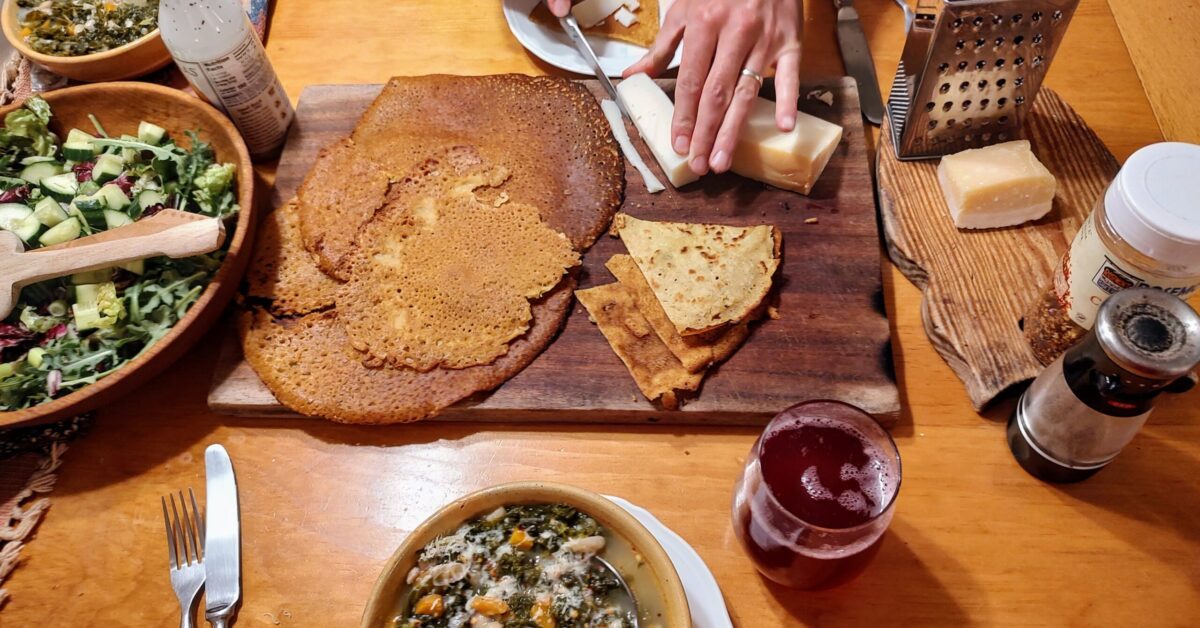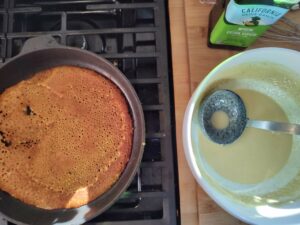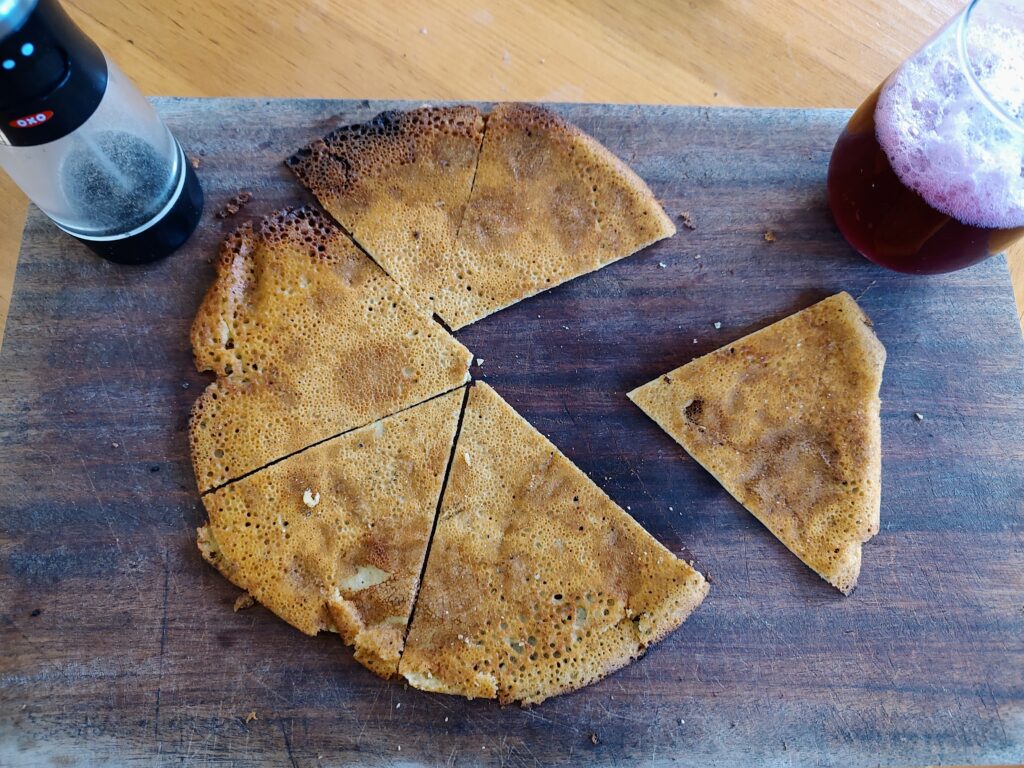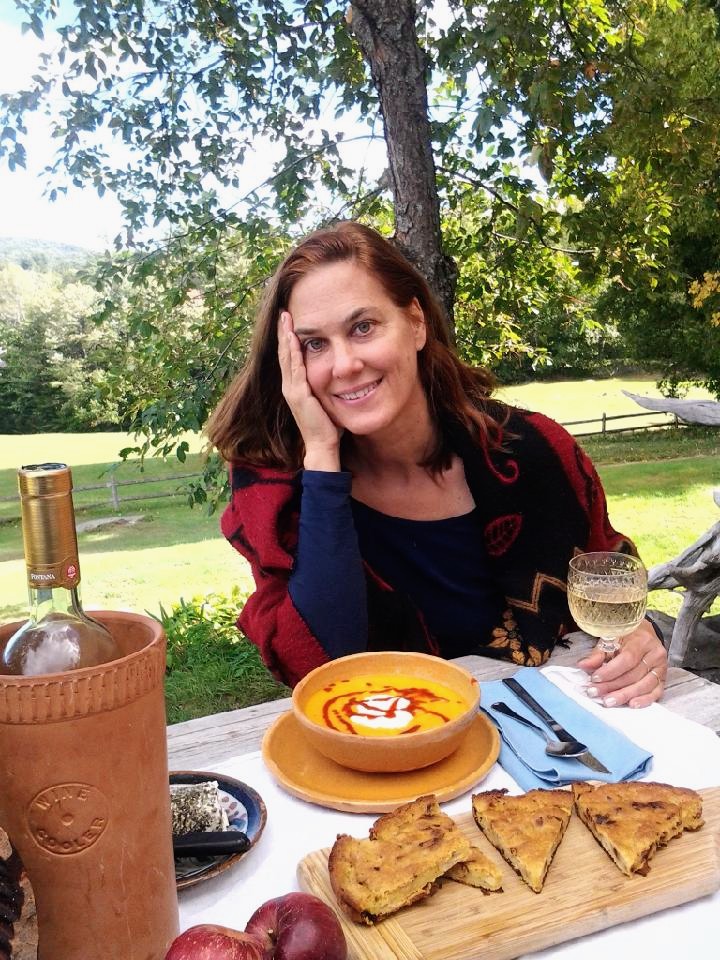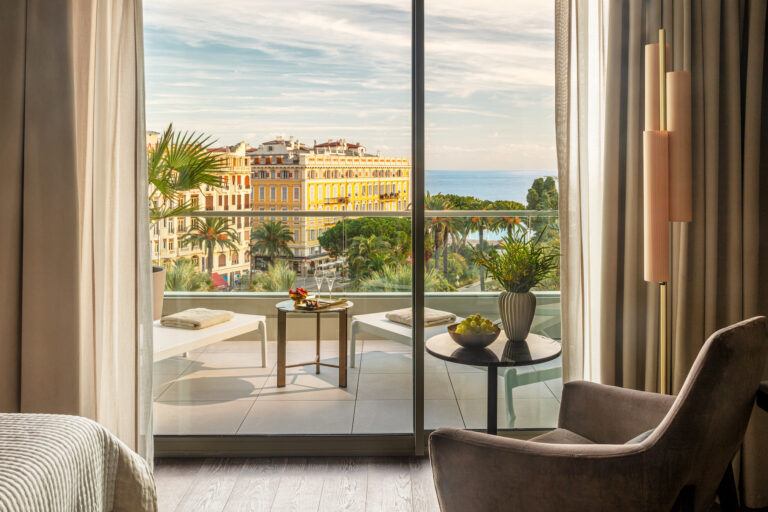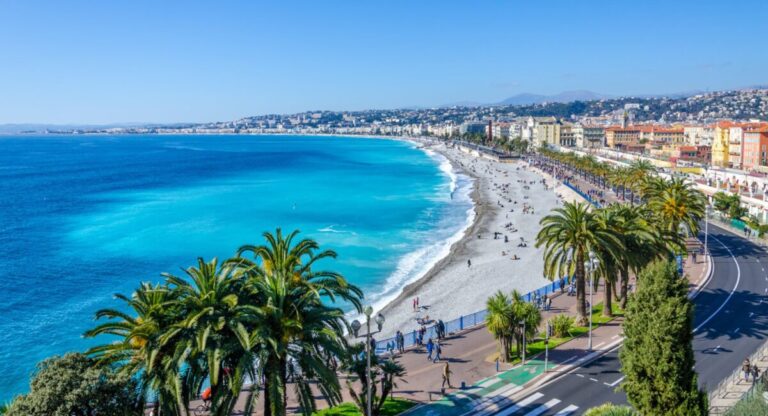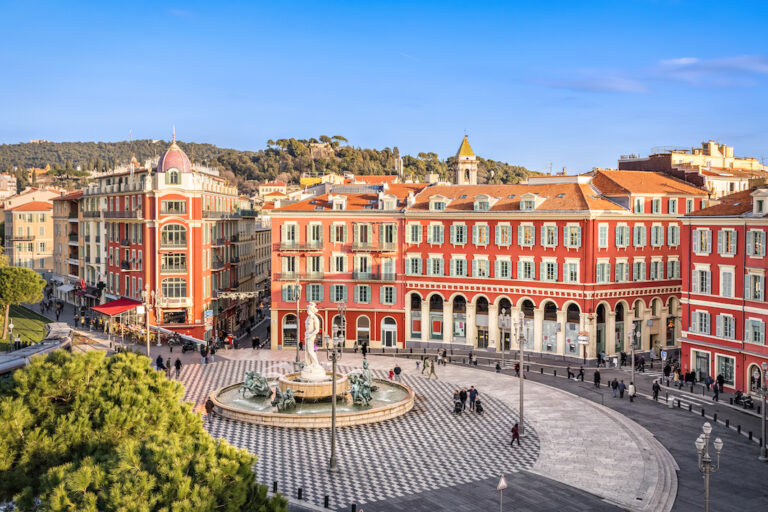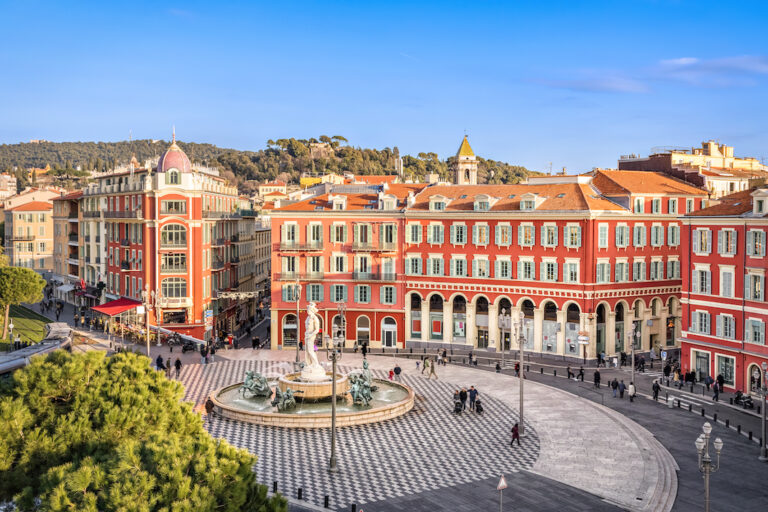I first heard of this curiously-named edible thing in 2011, from an American-born naturalized British screenwriter friend who lives in Dublin. “I made a socca today,” he emailed me one day. Immediately curious to know what it was, I did some research and learned that socca is a French Mediterranean chickpea crêpe. In its simplest form, it’s made of farine de pois chiche, or fine-ground chickpea flour, sea salt, a glug of fruity olive oil, and enough water to make a creamy batter. It’s meant to be eaten with your fingers, hot off a wood-fired flat metal pan.
It was clear that to get a proper socca, you had to go to the source: the French Riviera. Ideally, you’d buy it from a cart in the street, cut into irregular wedges and packed into a paper cone, accompanied by a glass of chilled rosé glowing in the afternoon sunlight. Also ideally, you’d have a few hours to stroll through Nice, sampling the different soccas on offer, opining with increasingly tipsy authority about the relative merits of each (this one is thinner and crisper; another has a subtle perfume of fresh rosemary; this one is more custardy; that one was cooked over a gas flame and doesn’t have the wood-fired tang that makes it authentique) while the salty sea breeze whets your appetite for more.
Alas for me, I was living far from the French Riviera, in the White Mountains of New Hampshire, in a farmhouse with an ancient propane stove whose oven door didn’t close properly. Also alas for me, I knew of no street-food North American version of socca, no urban corner in Boston or Austin where a charismatic middle-aged woman flung ladlefuls of fragrant beige batter at flat pans glistening with hot olive oil.
But when I read the recipe, socca seemed easy to make, even if I lacked access to a wood-fired oven or a traditional flat metal pan. So I bought some Bob’s Red Mill chickpea flour, fired up my sketchy oven, used a cast iron skillet, and hoped for the best.
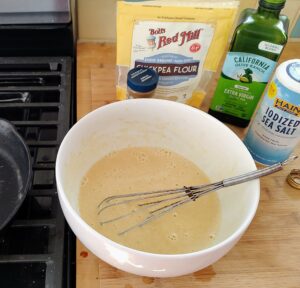
Socca was allegedly invented through the urgent necessity of warfare. Legend has it that in 1543, under siege from the invading Turkish army, the Niçois soldiers, losing the battle and running out of ammo, seized a sack of farine de ceci from their rations and mixed this fine-milled chickpea flour (or maybe it was chickpea soup) with the boiling oil they were pouring on the invaders in order to thicken it. As this freshly-cooked fusillade rained down on the Turks’ shields, a couple of them, catching the aroma of something delicious, slid their fingers through the cooked dough intended to blister and scald them. “This is good,” they’re reputed to have said to one another, nodding with culinary entrepreneurial gusto. “We could sell this.”
Socca’s popularity as street food caught on in the early 1900s, when a few enterprising Niçois cooks reinvented it as a snack that could be made wherever hungry workmen were. Nourishing, cheap, and portable, fresh hot socca was eaten by fishermen at the port in the early morning, laborers at ten, and so on, throughout the day. As time went on, as with most commonplace working-class dishes, the appeal of this delicious crepe came to the attention of the general populace. Once a fisherman’s breakfast, it’s now eaten by the hordes of tourists who visit the playground of yachting movie stars and topless sunbathing divas.
Luckily for the would-be novice baker, socca is forgiving and capacious and flexible, and the variations on the basic three-ingredient recipe are possibly as plentiful as there are cooks. You can add rosemary, a pinch or two of cumin, or sliced onion. Socca can be baked or cooked over an open flame, either gas or wood. You can cook it in a cast iron skillet or a flat metal pan. You can add vegetables, cheese, or any other herbs or spices you like.
The Cote d’Azur by no means has an exclusive claim on chickpea pancakes. They’re eaten all around the Mediterranean, as well as in far-flung countries whose immigrant populations brought the recipe with them to their new homes. They’re called farinata in Liguria and faina in Genoa; in Tuscany, cecina or torta de ceci; in Sardinia, fainé genovese. Around Toulon and Marseille, a chickpea pancake is la cade. In Spain, they gussy them up with tiny shrimp and call them tortillitas de camarones. In Uruguay, August 27th is “la faina day.” Algerians eat farentita. Gibraltar, which has a significant Genoese population, calls the chickpea pancake panissa or calentita, depending on whether it’s baked or fried: both versions are celebrate as their national dish. India’s besan ka puda,spiced chickpea-flour crepes studded with vegetables, are socca by another name.
These days, my brand-new propane stove in New Mexico has an excellent and reliable oven that I don’t use for socca. After untold oven-related disappointments, I switched to the stovetop and never looked back, and now, after eleven years, through trial and error—and without a single Niçois chef to guide me—I am delighted to report that I’ve cracked the tough nut of the North American chickpea crepe.
This is my recipe. You’ll develop your own. And I hope that one fine day in the future, by some lovely stroke of fate, we’ll jostle each other in line at Chez Pipo or Chez Thérésa or Lou Pilha Leva, and you’ll tell me your version, because a good cook is always on the lookout for improvements.
North American Socca
Note: I add a whiff of cumin to give it some wood-fired smokiness. I used to add rosemary and sliced onion, and you are free to do so, but in my opinion, the best socca is the simplest socca.
Ingredients:
1 cup fine-milled white chickpea flour
1 cup warm water plus a dash more
2 T olive oil
½ tsp salt
¼ tsp cumin
Several grinds of black pepper
Mix the first five ingredients together in a bowl with a whisk until you have a frothy, creamy batter, free of lumps. Cover with a plate or plastic wrap and let the batter sit at room temperature for at least two hours, ideally six. This is important: the flour needs to hydrate properly for the pancake’s consistency.
When you’re ready to go, fire up a 12” well-tempered cast iron skillet on high heat until it’s HOT. Pour in enough olive oil to coat the bottom, being careful not to burn yourself. Pour about a third of the batter into the hot pan and swirl it around to spread evenly. Let the socca cook for a couple of minutes, then test the edges with a spatula. Loosen it, dance it around, and flip it—let the other side get slightly charred, then slide it onto a wooden cutting board, dust with several grinds of black pepper, and repeat this twice more with the rest of the batter. Serve warm wedges of socca with soup and cheese, and bon appétit!
Kate Christensen is a novelist and memoirist based in Taos, New Mexico. This essay is the first of a monthly series about French food called Bouffe.

